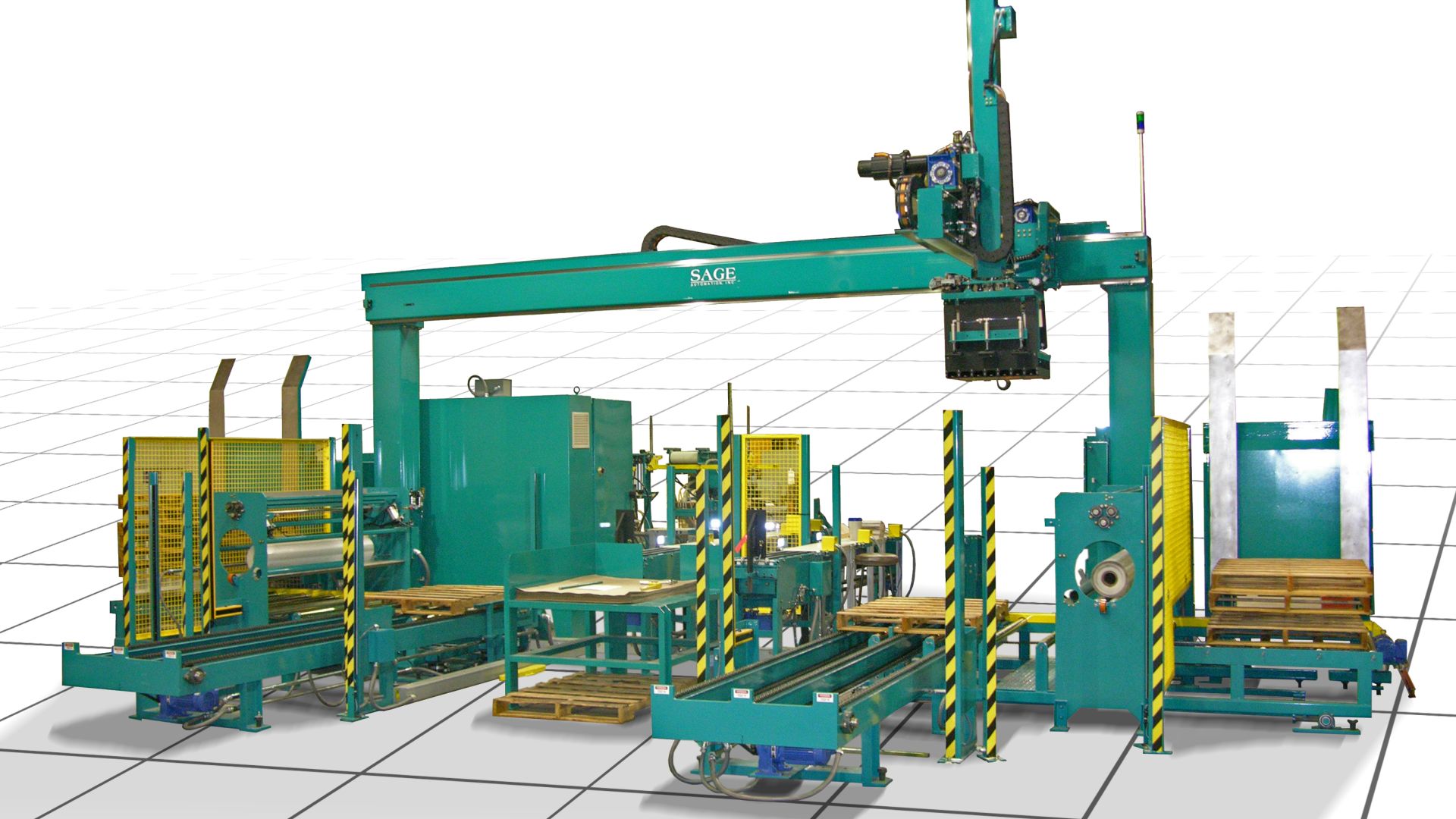Industrial Automated Palletizing
Efficient material handling is the backbone of modern industry, enabling seamless operations in manufacturing, warehousing, and distribution. Among the various technological advancements in this field, industrial automated palletizing stands out as a transformative solution that enhances productivity, safety, and accuracy. Whether you operate in food processing, pharmaceuticals, consumer goods, or logistics, automated palletizing has become essential to remain competitive and meet growing operational demands.
What is Automated Palletizing?
Automated palletizing refers to the use of robotic systems or automated machinery to stack products or materials onto pallets in a systematic and efficient manner. Unlike manual processes, automated systems can work continuously, reduce human error, and handle large volumes with precision.
This solution is often used at the end of production lines to prepare products for shipping and storage. Automated palletizers are designed to adapt to a variety of shapes, sizes, and weights—ensuring flexibility for any industry’s requirements.
Why Automated Palletizing is a Game-Changer for Material Handling
1. Increased Productivity and Throughput
- Automated palletizers operate around the clock without fatigue, significantly boosting productivity.
- With fast and consistent stacking patterns, they increase throughput—handling more units in less time.
- The use of robotic arms or layer-forming systems ensures seamless operation, even for mixed or customized loads.
2. Reduced Labor Costs and Reallocation of Workforce
- Automating palletizing tasks allows companies to reallocate workers to higher-value roles, focusing on tasks that require human expertise.
- Reduces the reliance on manual labor for repetitive and physically demanding tasks, cutting labor costs over time.
- Mitigates issues related to labor shortages, especially in regions with growing worker demand and regulatory constraints.
3. Improved Workplace Safety
- Palletizing by hand involves repetitive lifting, bending, and stacking, which can lead to musculoskeletal injuries. Automation eliminates these risks.
- Automated systems operate within defined safety zones, ensuring controlled movement and preventing workplace accidents.
- Minimizes workers’ exposure to dangerous environments such as cold storage areas or hazardous chemical handling zones.
4. Precision and Consistency
- Automated palletizers ensure precise stacking patterns, optimizing space on pallets and reducing the risk of load instability.
- Consistency in stacking minimizes shipping damages, ensuring products reach their destination intact, reducing returns and losses.
- Advanced software integration enables real-time quality control, helping detect and address issues immediately.
5. Scalability and Flexibility
- Modern automated palletizing systems can handle multiple product types on the same line, ensuring versatility.
- These solutions are easily scalable—whether you’re adding new product lines or increasing production, automated systems can grow with your needs.
- Many systems feature modular designs that allow businesses to adapt the equipment to changing requirements without significant downtime.
6. Integration with Warehouse Management Systems (WMS)
- Automated palletizers seamlessly integrate with warehouse management software (WMS), offering real-time tracking and inventory management.
- Supports just-in-time inventory strategies by synchronizing production with demand.
- Data collected from these systems can be analyzed to improve operational efficiency and predict future trends.
Applications Across Industries
- Consumer Goods: Automated palletizing ensures quick and precise handling of diverse packaging formats.
- Food & Beverage: Ensures rapid palletizing under strict hygiene standards.
- Pharmaceuticals: Handles sensitive products with care, maintaining integrity and accuracy.
- Logistics & Warehousing: Speeds up the loading and unloading process, ensuring timely delivery.
- Building Materials: Efficiently manages bulky, heavy loads like bricks, tiles, or bags of cement.
A Smart Investment for Sustainable Growth
In today’s fast-paced industrial landscape, businesses can no longer afford to rely on outdated, manual processes for material handling. Industrial automated palletizing offers a compelling solution by enhancing efficiency, improving safety, and reducing costs. By adopting this technology, companies position themselves for sustainable growth—meeting the challenges of high demand, complex logistics, and rising labor costs head-on.
Investing in automated palletizing is not just a leap toward better material handling—it’s a step toward a smarter, safer, and more profitable future.
Let Us Help You Automate Your Material Handling
Sage Automation provides end of line palletizing, in-line palletizing, and multi-lane palletizing. We engineer and manufacture original gantry robot designs for use in palletizing processes. When applicable, we also implement a variety of articulated arm models to perform palletizing.
If your company receives completed pallets as part of your procedures, click here to check out our robots that perform depalletizing tasks.
Looking to optimize your operations with industrial automated palletizing? Contact us today to learn how we can tailor a solution for your unique needs.



